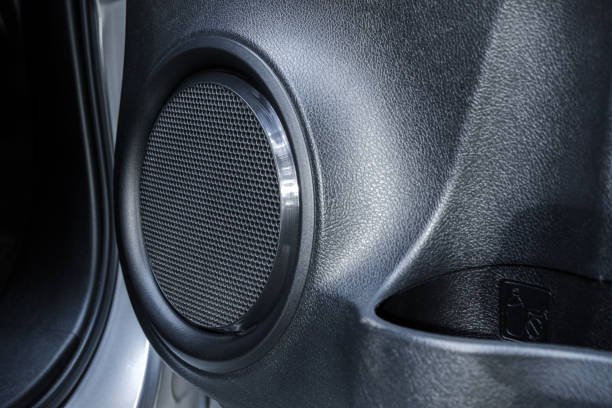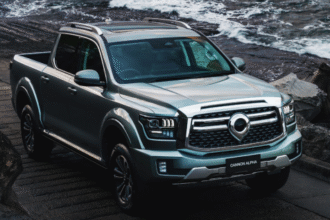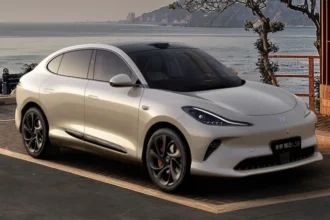When you buy a new car, one of the first things you might notice is the factory-installed audio system. At first, it may seem decent, but over time, many drivers feel let down by the sound quality. The common complaints include weak bass, sharp highs, and an overall lack of depth. These systems often fail to deliver the rich and immersive experience that music lovers desire.
This article explores why stock car audio systems typically underperform, what challenges manufacturers face, and how car owners can enhance their listening experience.
1. Budget Constraints and Cost Cutting
Car manufacturers must control production costs to keep vehicles competitively priced. Because of this, non-essential components like the audio system often receive less attention.
- Cheaper Components: Automakers often choose low-cost speakers, amplifiers, and head units made from inferior materials, which leads to poor sound reproduction.
- Limited R&D: Unlike premium audio brands, car companies rarely invest heavily in sound system research. They focus more on reliability and affordability than on audio excellence.
2. Design and Installation Limitations
Creating a high-fidelity sound system inside a vehicle is complex. However, design shortcuts often reduce performance.
- Speaker Placement: Instead of focusing on acoustics, manufacturers place speakers in doors and dashboards to simplify production. These positions rarely provide optimal sound staging.
- Acoustic Environment: The small, enclosed space inside a car, combined with road and engine noise, makes audio tuning difficult. Factory systems rarely account for these variables in detail.
- Limited Amplification: Many stock systems rely solely on the head unit’s weak amplifier. This leads to distortion and poor performance at higher volumes.
3. Speaker Quality and Material Limitations
Speakers play a central role in sound quality. Yet, most stock systems use low-end speakers that can’t deliver a full audio spectrum.
- Cheap Cones and Surrounds: Manufacturers often use low-cost materials like paper or plastic for speaker cones, which perform poorly under pressure.
- Small Size and Power Limits: Smaller speakers with low power capacity can’t deliver deep bass or clarity at high volumes.
- Lack of Tweeters and Crossovers: Many factory systems lack dedicated components for handling high frequencies, which affects detail and balance.
4. Simplified Audio Processing and Equalization
Digital signal processing (DSP) can improve sound quality dramatically. Still, most stock systems offer minimal or no DSP capability.
- Basic or No DSP: Many vehicles lack the advanced processing needed to balance the sound environment properly.
- Preset Equalization: The tuning is generic and aims to please the average listener, not audiophiles.
- Multi-Source Compatibility: Stock systems must support radio, Bluetooth, and auxiliary inputs. This complexity often reduces overall performance quality.
5. Safety and Driver Distraction Considerations
Safety always comes first, so car makers must ensure the audio system doesn’t distract drivers or drown out important alerts.
- Volume Limits: To reduce distractions, stock systems cap volume levels and compress dynamic ranges.
- Alert Integration: Warning sounds often override music playback, breaking the immersion.
- Simple Controls: Manufacturers design interfaces for quick use, limiting advanced customization.
6. Environmental Noise and Vibration
Even if a car has decent speakers, environmental noise often ruins the listening experience. Wind, road, and engine noise all interfere with audio clarity.
- Minimal Noise Isolation: Most systems don’t adjust for noise changes during high-speed driving.
- Poor Mounting and Enclosures: Speakers installed without proper insulation can cause distortion from vibration and panel resonance.
7. User Expectations and Listening Habits
Many drivers compare in-car sound to what they hear on high-end headphones or home systems, which creates unrealistic expectations.
- Speaker Size and Performance: Car speakers are smaller and must work within space limitations, unlike powerful home audio setups.
- No Personalization Options: Most stock systems don’t allow users to fine-tune the sound according to their tastes.
- Low-Quality Audio Sources: Playing compressed files via Bluetooth or FM radio can degrade audio fidelity even further.
How to Upgrade Your Car Audio Experience
Fortunately, several upgrades can greatly improve your vehicle’s sound quality. These improvements are both practical and rewarding.
1. Replace the Speakers
Install aftermarket speakers with better materials such as polypropylene cones and silk dome tweeters. These upgrades enhance sound clarity and bass.
2. Add a Dedicated Amplifier
A standalone amplifier provides more power and reduces distortion. Your speakers will sound clearer, especially at higher volumes.
3. Car Audio Use a DSP or Graphic Equalizer
Advanced audio processors allow precise tuning. You can balance frequencies, reduce distortion, and tailor the audio to your preferences.
4.Car Audio Improve Insulation and Speaker Placement
Use sound-deadening materials inside doors and flooring to cut road noise. Custom enclosures and strategic speaker placement can also enhance sound staging.
5.Car Audio: Upgrade the Head Unit
Installing a premium head unit adds high-resolution audio support and advanced tuning controls. It can also improve Bluetooth or wired connection quality.
Car Audio Conclusion
Stock car audio systems are designed for convenience and affordability, not excellence. Budget limitations, poor speaker placement, and limited tuning options result in mediocre sound. However, with a few well-planned upgrades, you can transform your listening experience.
By understanding these limitations and addressing them with quality components, you can enjoy crystal-clear, immersive sound every time you hit the road.

More Articles:
MG ES5 EV Coming to Pakistan – International Features
GWM Tank 500 PHEV Arriving Pakistan – International Specs & Features
Capital Smart Motors Signs MoU with Geely to Launch NEVs in Pakistan








